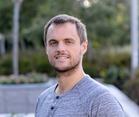Optical and Visual Characteristics of Animal Eyes
Hosted By: Applications of Visual Science Technical Group
15 November 2018 12:00 - 13:00
Eastern Time (US & Canada) (UTC -05:00)In this webinar, hosted by the OSA Applications of Visual Science Technical Group, Dr. Martin S. Banks, Dr. Jenny Read, and Dr. Benjamin Palmer will give a detailed overview of several optical and visual solutions presented in animal eyes.
The webinar will give you an understanding about why pupil shapes are different in preys and predators, what kind of visual approaches an insect like the mantis uses to have very precise depth perception, and how the eye of the scallop which only uses reflecting elements as mirrors works.
This webinar will feature three leading experts, who will share their knowledge with presentations on:
- "Pupil Shapes: Preys versus Predators” by Dr. Martin S. Banks, University of California Berkeley
- "Steropsis in Insects: The Praying Mantis versus Human Observers" by Dr. Jenny Read, Newcastle University
- "The Image Forming Mirror Eye of the Scallop" by Dr. Benjamin Palmer, Weizmann Science Institute
What You Will Learn:
- Attendees will learn how the optics and visual systems of very different animals are bio-designed to accommodate for different daily tasks.
- Attendees will learn how some of these models resemble very sophisticated optical systems, like telescopes or deformable mirrors, and how they can even be used to inspire future approaches to computer vision.
Who Should Attend:
- This webinar is recommended for graduate students and researchers in vision sciences, biology, optics and ophthalmology.
- This webinar is highly recommended for a wider audience of optical researchers and professionals who would gain insight into how optics and visual strategies in the animal world are able to bio-inspire sophisticated artificial designs.
Presenters
Martin S. Banks, University of California Berkeley

Martin S. Banks received his PhD in developmental psychology from the University of Minnesota in 1976. He was Assistant and Associate Professor at the University of Texas at Austin until 1985 when he moved to the University of California, Berkeley. He has been Associate and Full Professor of Optometry, Vision Science, Psychology, and Neuroscience at Berkeley. He was Chair of the Vision Science Graduate Program. He is currently director of the Center for Innovation in Vision and Optics. He has done research on visual development, integration of information across the senses, visual space perception, and display technology.
Dr. Jenny Read, University of Newcastle

Jenny Read is Professor of Vision Science at Newcastle University’s Institute of Neuroscience. She has a first class degree in physics (1994), a doctorate in theoretical physics (1997) and a Masters in neuroscience (1999), all from Oxford University, UK. From 1997-2001 she was a Wellcome Training Fellow in Mathematical Biology at Oxford University, then from 2001-2005 a postdoctoral fellow at the US National Eye Institute. She returned to the UK in 2005 with a University Research Fellowship from the Royal Society, Britain’s national science academy. Her lab works on many aspects of visual perception, especially stereoscopic or “3D” vision. Current projects include modelling how visual cortex encodes binocular information, developing a new stereo vision test for children (http://research.ncl.ac.uk/asteroid/), and uncovering how insects see in stereoscopic 3D (www.jennyreadresearch.com/research/m3/). More information and all publications are available at www.jennyreadresearch.com.
Dr. Benjamin Palmer, Weizmann Science Institute

Benjamin Palmer was born and bred along the beautiful Welsh coastline in the U.K. He studied chemistry at Cardiff University and continued there for his PhD with Prof. Kenneth Harris, studying the interaction of polarized X-rays with materials – research which led to the development of the X-ray Birefringence Imaging technique. He has been a Postdoctoral Fellow at the Weizmann Institute of Science since 2014, firstly as a Human Frontiers Science Program, Cross-Disciplinary Fellow and Koshland Prize Scholar and now as a Senior Postdoctoral Fellow. His current research focuses on how organisms make and use organic crystals to manipulate light for different optical functions (the field of ‘organic biomineralization’). He has a particular interest in visual systems in animals which utilize reflective optics.
